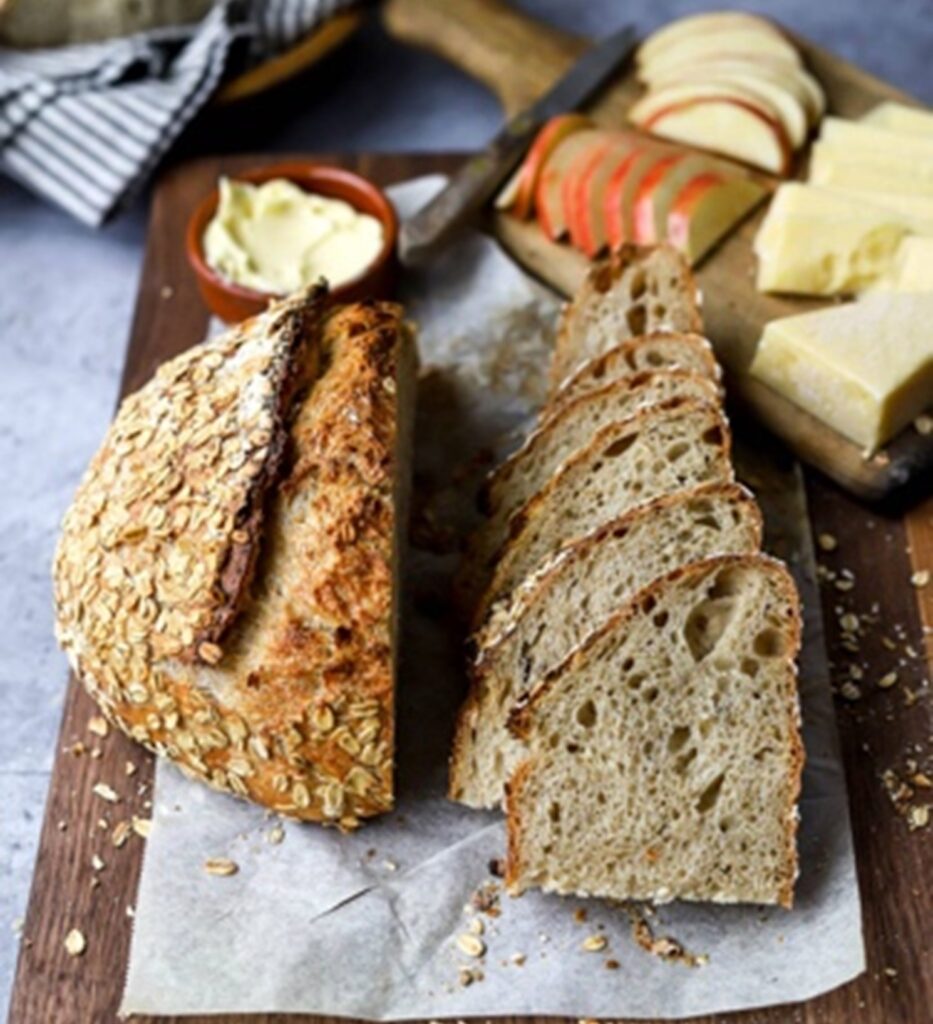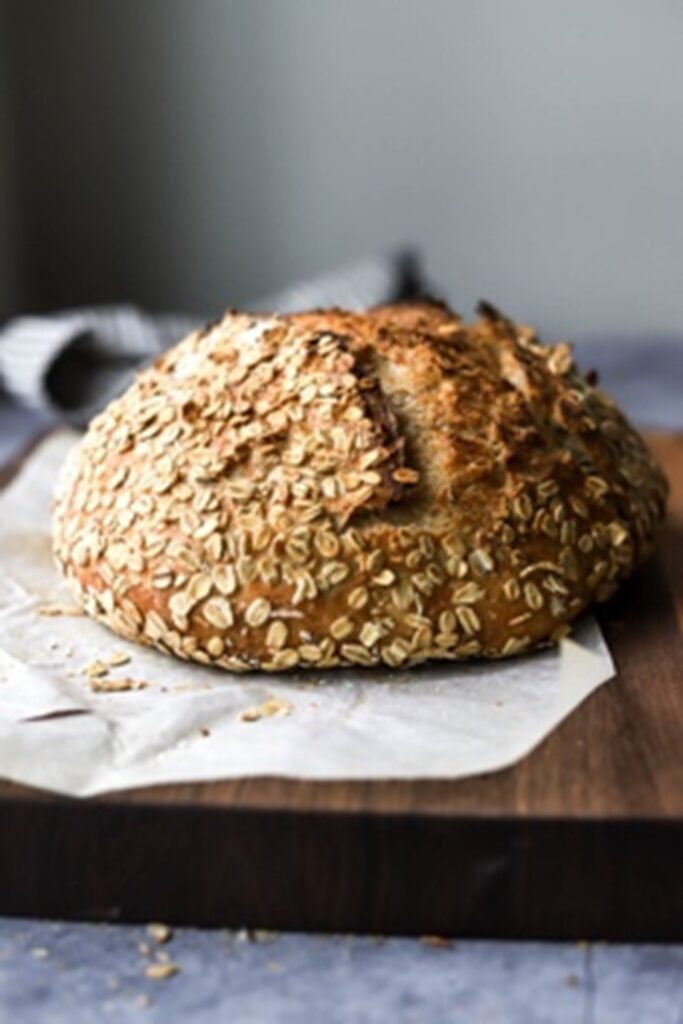

Ingredients
275 g water room temperature, filtered
100 g cooked oat porridge, (according to pkg. instructions cooled to room temperature)
1 teaspoon dry active yeast
100 g sourdough starter discard or fully ripe
325 g unbleached all -purpose flour
75 g whole wheat flour
50 g old fashioned rolled oats, uncooked plus more for coating the crust
12 g kosher salt
Instructions
- Mix the dough: In a large mixing bowl, combine the water, dry active yeast, cooked oats, and sourdough starter. Swish it all together, to dissolve ingredients into the water.
- Add the unbleached AP flour, wheat flour, salt, and uncooked oats to the mixture. Mix the dough together with a Swedish whisk, pinch and squeeze until it becomes a sticky dough.
- Scrape down the sides of the bowl with a rubber spatula and scrape any dough off your hands as well. Cover the bowl and let rest for 20 minutes.
- Stretch and fold the dough in the bowl, in order to help develop the gluten and strengthen the dough to trap the fermented gases, creating air pockets in your loaf. Dampen your hands with water to prevent the dough from sticking and gently lift up one corner of the dough and fold it to the center. You shouldn’t be stretching so high that the dough tears. Rotate the bowl and repeat 3 more times until you have worked your way around the dough. Repeat this process every 35 minutes for 1.5 hours. Be extra gentle towards the end so you don’t deflate the dough.
- Bulk fermentation: Cover the bowl and let the dough proof at room temperature for 3-4 hours until it is puffy and jiggly. If you don’t see any signs of fermentation (bubbles, puffiness). let the dough ferment for up 1-2 more hours.
- Shape the dough: sprinkle your clean work surface well with flour. Pour the dough out onto the work surface. Use your hands to gently stretch the dough out into a square shape. One at a time, bring all 4 corners into the center of the dough. Flip the dough over, so it is seam side down, to rest on the counter for 5 minutes. This is called a “bench rest.”
- Flip the dough over once more and bring all 4 corners into the center again to create a tighter boule shape, with more tension. Pinch the corners together.
- Flour your proofing basket well. Pour about 1 cup of uncooked oats into a shallow dish. Spray the top of dough with water, and roll it in the oats to coat the crust. Spray the bottom with water, and roll it to coat the entire crust with oats. Place the dough in the prepared proofing basket. Cover the dough with a dry clean kitchen towel, and let the dough proof for another 1.5-2 hours at room temperature.
- *Another option: you can place the proofing basket in a plastic grocery bag, twist it shut, and let the dough do a longer cold ferment in the fridge overnight. The next morning, take it out of the fridge, and let it rest for an hour while the oven and Dutch oven preheat.
- Bake: Meanwhile place a 5-6 quart Dutch oven on the middle rack of your oven. Preheat the oven to 450°F for at least 45 minutes. Invert the proofed dough onto a piece of parchment paper. Slash the top with a sharp chef’s knife or lame. This creates a controlled way for the steam inside the bread to release.
- Carefully remove the hot Dutch oven from the oven, and remove the lid. Use the parchment paper as a sling, and lower the loaf into the Dutch oven. Place the lid back on. Return the pot to the oven and bake for 25 minutes with the lid on.
- Remove the lid and bake for another 25 minutes uncovered.
- Allow the bread to cool completely on a rack before slicing.